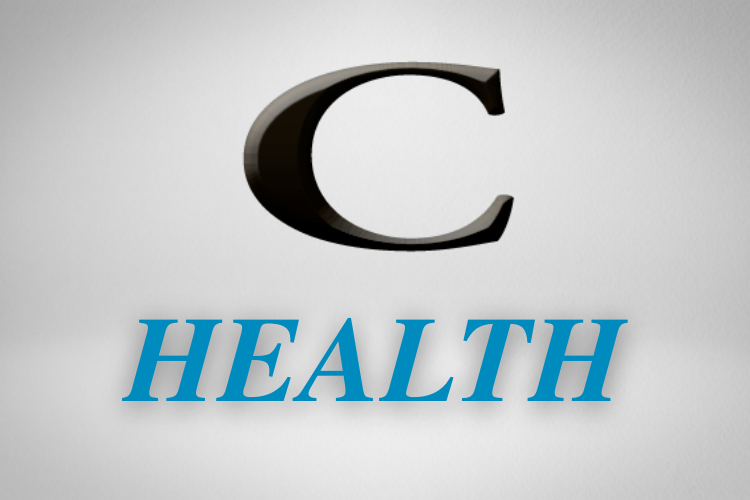Post-COVID Conditions
Some people who have been infected with the virus that causes COVID-19 can experience long-term effects from their infection, known as post-COVID conditions (PCC) or long COVID.
People call post-COVID conditions by many names, including: long COVID, long-haul COVID, post-acute COVID-19, post-acute sequelae of SARS CoV-2 infection (PASC), long-term effects of COVID, and chronic COVID.
What You Need to Know
- Post-COVID conditions can include a wide range of ongoing health problems; these conditions can last weeks, months, or years.
- Post-COVID conditions are found more often in people who had severe COVID-19 illness, but anyone who has been infected with the virus that causes COVID-19 can experience post-COVID conditions, even people who had mild illness or no symptoms from COVID-19.
- People who are not vaccinated against COVID-19 and become infected may also be at higher risk of developing post-COVID conditions compared to people who were vaccinated and had breakthrough infections.
- While most people with post-COVID conditions have evidence of infection or COVID-19 illness, in some cases, a person with post-COVID conditions may not have tested positive for the virus or known they were infected.
- CDC and partners are working to understand more about who experiences post-COVID conditions and why, including whether groups disproportionately impacted by COVID-19 are at higher risk.
As of July 2021, “long COVID,” also known as post-COVID conditions, can be considered a disability under the Americans with Disabilities Act (ADA). Learn more: Guidance on “Long COVID” as a Disability Under the ADA, Section
About Long COVID or Post-COVID Conditions
Post-COVID conditions are a wide range of new, returning, or ongoing health problems that people experience after first being infected with the virus that causes COVID-19. Most people with COVID-19 get better within a few days to a few weeks after infection, so at least four weeks after infection is the start of when post-COVID conditions could first be identified. Anyone who was infected can experience post-COVID conditions. Most people with post-COVID conditions experienced symptoms days after their SARS CoV-2 infection when they knew they had COVID-19, but some people with post-COVID conditions did not notice when they first had an infection.
There is no test to diagnose post-COVID conditions, and people may have a wide variety of symptoms that could come from other health problems. This can make it difficult for healthcare providers to recognize post-COVID conditions. Your healthcare provider considers a diagnosis of post-COVID conditions based on your health history, including if you had a diagnosis of COVID-19 either by a positive test or by symptoms or exposure, as well as doing a health examination.
Science at CDC
Scientific evidence and studies behind long COVID
Science behind Long COVID
Symptoms
People with post-COVID conditions (or long COVID) may experience many symptoms.
People with post-COVID conditions can have a wide range of symptoms that can last more than four weeks or even months after infection. Sometimes the symptoms can even go away or come back again.
Post-COVID conditions may not affect everyone the same way. People with post-COVID conditions may experience health problems from different types and combinations of symptoms happening over different lengths of time. Most patients’ symptoms slowly improve with time. However, for some people, post-COVID conditions may last months, and potentially years, after COVID-19 illness and may sometimes result in disability.
People who experience post-COVID conditions most commonly report:
General symptoms
- Tiredness or fatigue that interferes with daily life
- Symptoms that get worse after physical or mental effort (also known as “post-exertional malaise”)
- Fever
Respiratory and heart symptoms
- Difficulty breathing or shortness of breath
- Cough
- Chest pain
- Fast-beating or pounding heart (also known as heart palpitations)
Neurological symptoms
- Difficulty thinking or concentrating (sometimes referred to as “brain fog”)
- Headache
- Sleep problems
- Dizziness when you stand up (lightheadedness)
- Pins-and-needles feelings
- Change in smell or taste
- Depression or anxiety
Digestive symptoms
Other symptoms
- Joint or muscle pain
- Rash
- Changes in menstrual cycles
Symptoms that are hard to explain and manage
Some people with post-COVID conditions have symptoms that are not explained by tests.
People with post-COVID conditions may develop or continue to have symptoms that are hard to explain and manage. Clinical evaluations and results of routine blood tests, chest x-rays, and electrocardiograms may be normal. The symptoms are similar to those reported by people with ME/CFS (myalgic encephalomyelitis/chronic fatigue syndrome) and other poorly understood chronic illnesses that may occur after other infections. People with these unexplained symptoms may be misunderstood by their healthcare providers, which can result in a long time for them to get a diagnosis and receive appropriate care or treatment.
Tips for talking to your doctor about post-COVID conditions
Health conditions
Some people experience new health conditions after COVID-19 illness.
Some people, especially those who had severe COVID-19, experience multiorgan effects or autoimmune conditions with symptoms lasting weeks or months after COVID-19 illness. Multiorgan effects can involve many body systems, including the heart, lung, kidney, skin, and brain. As a result of these effects, people who have had COVID-19 may be more likely to develop new health conditions such as diabetes, heart conditions, or neurological conditions compared with people who have not had COVID-19.
People experiencing any severe illness may develop health problems
People experiencing any severe illness, hospitalization, or treatment may develop problems such as post-intensive care syndrome, or PICS.
PICS refers to the health effects that may begin when a person is in an intensive care unit (ICU), and which may persist after a person returns home. These effects can include muscle weakness, problems with thinking and judgment, and symptoms of post-traumatic stress disorder (PTSD). PTSD involves long-term reactions to a very stressful event. For people who experience PICS following a COVID-19 diagnosis, it is difficult to determine whether these health problems are caused by a severe illness, the virus itself, or a combination of both.
People More Likely to Develop Long COVID
Some people may be more at risk for developing post-COVID conditions (or long COVID).
Researchers are working to understand which people or groups of people are more likely to have post-COVID conditions, and why. Studies have shown that some groups of people may be affected more by post-COVID conditions. These are examples and not a comprehensive list of people or groups who might be more at risk than other groups for developing post-COVID conditions:
- People who have experienced more severe COVID-19 illness, especially those who were hospitalized or needed intensive care.
- People who had underlying health conditions prior to COVID-19.
- People who did not get a COVID-19 vaccine.
- People who experience multisystem inflammatory syndrome (MIS) during or after COVID-19 illness.
Health Inequities May Affect Populations at Risk for Long COVID
Some people are at increased risk of getting sick from COVID-19 because of where they live or work, or because they can’t get health care. Health inequities may put some people from racial or ethnic minority groups and some people with disabilities at greater risk for developing post-COVID conditions. Scientists are researching some of those factors that may place these communities at higher risk of both getting infected or developing post-COVID conditions.
Preventing Long COVID
The best way to prevent post-COVID conditions is to protect yourself and others from becoming infected. For people who are eligible, getting vaccinated and staying up to date with vaccines against COVID-19 can help prevent COVID-19 infection and protect against severe illness.
Research suggests that people who are vaccinated but experience a breakthrough infection are less likely to report post-COVID conditions, compared to people who are unvaccinated.
Learn more about protecting yourself and others from COVID-19.
Living with Long COVID
Living with a post-COVID condition can be hard, especially when there are no immediate answers or solutions.
However, people experiencing post-COVID conditions can seek care from a healthcare provider to come up with a personal medical management plan that can help improve their symptoms and quality of life. Review these tips to help prepare for a healthcare provider appointment for post-COVID conditions. In addition, there are many support groups being organized that can help patients and their caregivers.
Although post-COVID conditions appear to be less common in children and adolescents than in adults, long-term effects after COVID-19 do occur in children and adolescents.
Talk to your doctor if you think you or your child has long COVID or a post-COVID condition. Learn more: Tips for Talking to Your Healthcare Provider about Post-COVID Conditions
Data for Long COVID
Studies are in progress to better understand post-COVID conditions and how many people experience them.
CDC is using multiple approaches to estimate how many people experience post-COVID conditions. Each approach can provide a piece of the puzzle to give us a better picture of who is experiencing post-COVID conditions. For example, some studies look for the presence of post-COVID conditions based on self-reported symptoms, while others collect symptoms and conditions recorded in medical records. Some studies focus only on people who have been hospitalized, while others include people who were not hospitalized. The estimates for how many people experience post-COVID conditions can be quite different depending on who was included in the study, as well as how and when the study collected information. Estimates of the proportion of people who had COVID-19 that go on to experience post-COVID conditions can vary:
- 13.3% at one month or longer after infection
- 2.5% at three months or longer, based on self-reporting
- More than 30% at 6 months among patients who were hospitalized
CDC and other federal agencies, as well as academic institutions and research organizations, are working to learn more about the short- and long-term health effects associated with COVID-19, who gets them and why.
Scientists are also learning more about how new variants could potentially affect post-COVID symptoms. We are still learning to what extent certain groups are at higher risk, and if different groups of people tend to experience different types of post-COVID conditions. These studies, including for example CDC’s INSPIRE and NIH’s RECOVERexternal icon, will help us better understand post-COVID conditions and how healthcare providers can treat or support patients with these longer-term effects. CDC will continue to share information with healthcare providers to help them evaluate and manage these conditions.
CDC is working to:
- Better identify the most frequent symptoms and diagnoses experienced by patients with post-COVID conditions.
- Better understand how many people are affected by post-COVID conditions, and how often people who are infected with COVID-19 develop post-COVID conditions afterwards.
- Better understand risk factors, including which groups might be more at risk, and if different groups experience different symptoms.
- Help understand how post-COVID conditions limit or restrict people’s daily activity.
- Help identify groups that have been more affected by post-COVID conditions, lack access to care and treatment for post-COVID conditions, or experience stigma.
- Better understand the role vaccination plays in preventing post-COVID conditions.
- Collaborate with professional medical groups to develop and offer clinical guidance and other educational materials for healthcare providers, patients, and the public. (Source: usa.gov/covid.gov/CDC)








